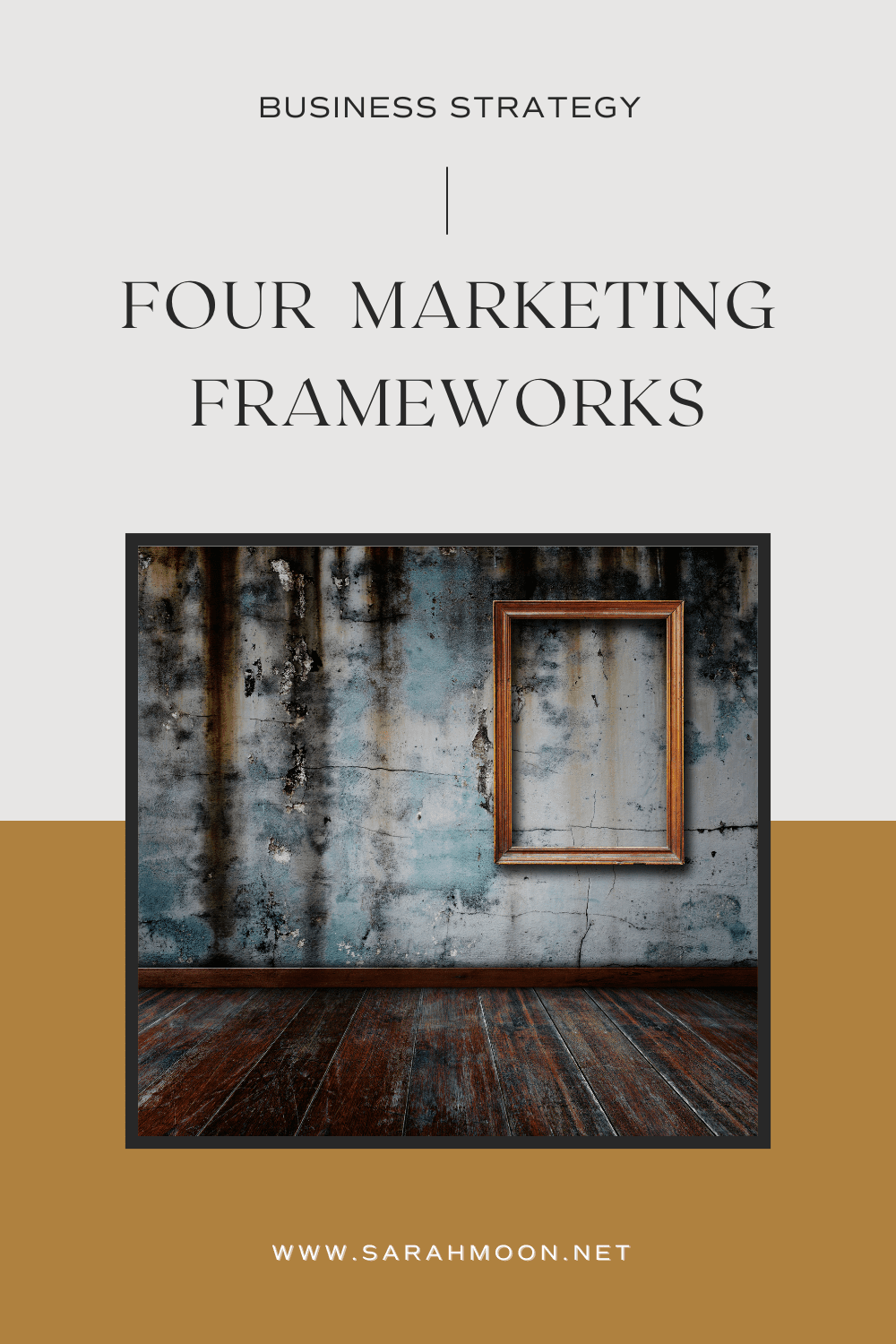Four Frameworks to Fuel Your Marketing & Business Strategy
If you don't have a marketing strategy, you're not alone!
In fact, over fifty percent of small businesses (the vast majority of businesses fit in the "small" category) do not have a strategy for their marketing or business growth.
This reality tracks with my own experience consulting with CEOs of micro-enterprises: Most attribute their growth to excellence in their work, solid referrals, and smart business decisions. In short, my clients are really, really good at what they do.
However, eventually whatever methods business owners use to grow—from networking to ads to referrals—begin to slow down and the marketing pipeline starts to crack. At that point many businesses look to start being intentional with their marketing.
The first step in being strategic in planning marketing and business development, however, is not a list of tactics.
Instead, you first need to develop a framework or model for your strategy. Think of your entire strategy as a brick wall—the framework is the mortar that holds all those pieces together. Without the framework, pieces will topple, no matter how carefully you've balanced them.
Additionally, using frameworks (or models—we use the terms interchangeably) in your business has other benefits as well.
Here are five big assets to creating a framework I reference regularly when helping client develop theirs in our Spark Sessions program:
A framework ensures brand integrity
A framework drives all of your content
A framework allows you to make good decisions
A framework provides clarity for all team members
A framework helps you better understand your customers
My philosophy of marketing and business strategy frameworks skews more towards seeing them as conceptual 360º views—this is more applicable to knowledge or authority businesses' needs.
This differs from a company like Hubspot that views frameworks as tactical steps—essentially the traditional corporate model that often doesn't service visionary leaders or change-making brands. (We need to stop trying to shove these kinds of businesses into the corporate model, it's not applicable and I argue actually prevents them from creating the impact they want to see.) Think of my view on frameworks as the "why", while traditional businesses often prefer the "how." Guess which one is more long-lasting!
If you're a purpose-drive brand, these are the top four marketing frameworks you can integrate into your business strategy.
Venn Diagram: Clarify your processes and purpose.
My specific interpretation is something I learned many years ago in some unmemorable business tome I had to read for one of my Communications Director jobs, and then was improved upon as I learned more about this subject. I also love Simon Bowen's Genius Model use of this visual—it's a great resource for digging into the Venn idea further, as his interpretation centers the customer outcome in the middle of the intersecting circles (this is similar to the way I think of it as well, though my focus is more on the essence of the movement/mission).
The Venn diagram approach to marketing and business frameworks can be particularly useful if you're developing a new service or addressing a new audience.
In our work, we get far more granular with this model, fleshing it out at least one more level (sometimes two for complex solutions), and then creating content frameworks off of that.
This is what SM&Co's Alignthority® System looks like:
The Alignthority® System: It's unique in that we marry movement marketing and business strategy together harmonious instead of siloing it as is typical in these models.
SWOT or Four-Square Model: Take a 360º view of your business and marketing landscape.
I think of the SWOT or Four-Square Model as a way to create a clear eyed perspective on what's happening right now (something we don't do enough of), which helps us to be proactive instead of reactive (something else we should all do more of).
We use model this all the time, both for ourselves and clients (sometimes I don't even show it to clients, but it's a good way to codify conversations so I can share it with our team for discussions). This was a method I learned ages ago when I worked in public sector communications, and it's continued to serve me well.
Making a difficult decision? Instead of pros and cons, SWOT it!
Planning the next year or quarter? Sit down and make a four-square model with your team. (This is how we developed our aforementioned Spark Sessions in 2022.)
Evaluating moving to a new audience or marketing? Draw out the four squares and look at the full picture.
Pyramid Model: Articulate the client or customer journey.
Do you facilitate transformation or growth that's multi-faceted, with stops along the way?
If I were working with you and you described this client or customer journey, I would sketch this progression out in a pyramid to help you articulate your clients' growth.
Here's one I created for us, to describe our clients' journey and ground ourselves in their current reality:
You can also see another usage of the pyramid model when I talk about buying journeys in this previous newsletter.
The journey clients undergo as they move towards becoming an Aligned Authority™.
This is also useful to ensuring you make recommendations that align with where your clients are now—for example, I have very different content approaches for clients at the early stage versus the middle. It's a great, practical tool for every day work. You can also use the pyramid model to develop lead generating quizzes, an assessment you sell as a lead product (think a small strategy process before a large done for you project), or to qualify clients to work with you.
If you're a coach or consultant, I'd go so far as to argue that having a pyramid model is almost a non-negotiable business asset.
Bullseye Model: Prioritize your audience or actions.
The bullseye framework can be invaluable in articulating your audience and sales priorities and it's particular valuable as you begin to grow your team so they are empowered with clarity on your company priorities.
I can't recall when I first learned how to develop a bullseye model, but it was many, many years ago when I primarily worked on the public relations side of marketing and we had to prioritize media outreach. The people in the center of the bullseye were our reliable coverage folks, while we had several other rings of increasing difficulty or specificity. This is very useful for tactical thinking and prioritizing!
The bullseye can have as many layers as necessary. For audience articulation, we typically limit it to 3-4.
I couldn't find a pretty, non-client example so I drew you one and snapped a photo in my Notes app—gorgeous, right? (Hey, we're all imperfect humans, may as well have an imperfect diagram in here! And, yes, yours can be a doodle in Notes—you have my permission.)
Should you develop marketing frameworks for your business?
The big risk when working with this type of thing—especially without a skilled facilitator—is that framework development can be an exercise in glamorous busywork. I'd rather you never look at a model than use it as an excuse to avoid progress. (Yes, this is a thing that happens a whole lot.)
If you take nothing else away from this discussion, I would love for you to understand this key point:
A framework or model can be as simple and a progressive line with signposts for each stop along the way—the power (and value, if we're talking about building value in your business) is in putting it down on paper. It can be as un-fancy as my scribbled bullseye and still be legit!
Do I have you convinced? Should you be using models in your business and marketing strategy? Is something holding you back from embracing this way of working? I'd love to answer your questions about this subject—just leave a comment!









Explore marketing strategies to research, grow, and engage your ideal audience in our guide to audience building and identification.